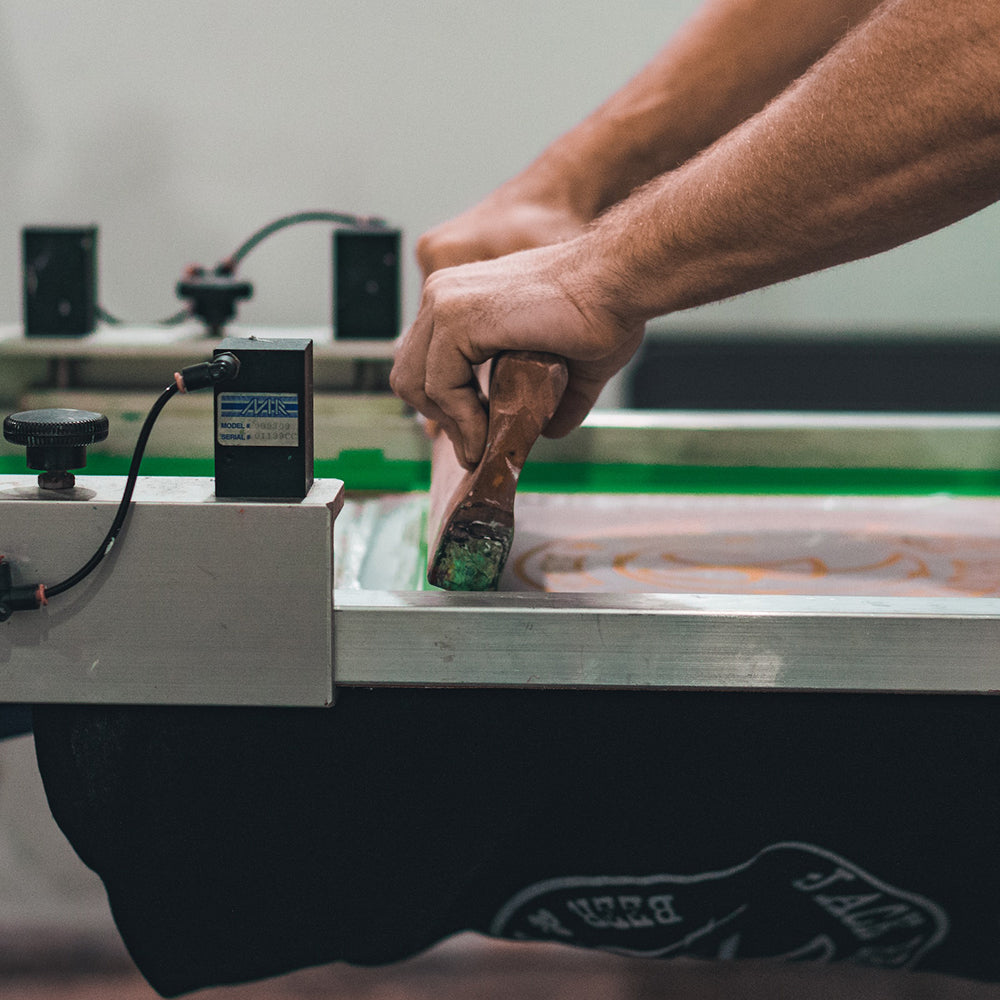Tote bags have become more than just a practical item for carrying groceries or books; they are a canvas for expression, a promotional tool, and a fashion statement. In this post, we'll explore three popular tote bag printing methods - screen printing, embroidery, and Direct to Garment (DTG) printing. We'll delve into how they work, their pros and cons, and which method suits various needs best.
What are Screen Printing, Embroidery, and DTG Printing?
Screen Printing is a technique where ink is pushed through a woven screen (stencil) onto the fabric. It's great for bold and graphic designs and is most effective for high-volume orders.
Embroidery involves stitching designs directly into the fabric, giving a textured and premium feel. It’s ideal for small, detailed artwork and adds a touch of elegance.
DTG Printing is a newer method that works like a paper printer, spraying the ink directly onto the fabric. This technique allows for high-detail, full-color images and is best for complex designs.
Advantages and Disadvantages
Screen Printing
- Advantages: Cost-effective for large batches, durable prints, vibrant colors.
- Disadvantages: Limited color range per design, not ideal for complex images, setup costs.
Embroidery
- Advantages: Long-lasting, professional look, three-dimensional texture.
- Disadvantages: Higher cost for larger designs, limited detail and color range.
DTG Printing
- Advantages: High detail capability, full-color printing, no setup fees.
- Disadvantages: Less durable than screen printing, more expensive for large orders, slower production time.
Real-World Examples
Screen Printed Tote Bags have been used effectively by retail brands for promotional events. For instance, a popular clothing brand used screen-printed totes for a marketing campaign, resulting in increased brand visibility.
Embroidered Tote Bags are often seen in corporate settings. A tech company gifted embroidered tote bags at a conference, adding a premium touch to their brand image.
DTG Printed Tote Bags are popular in the art and design community. An artist successfully sold tote bags with detailed artwork, showcasing the potential of DTG for intricate designs.
Understanding the Target Market
The target audience for tote bags varies. Fashion enthusiasts may prefer detailed, artistic designs achievable through DTG. In contrast, corporate clients might opt for the elegance of embroidery. Screen printing hits the mark for promotional events due to its cost-effectiveness for large quantities.
Tips for Selecting the Right Method
- Consider the Quantity: Screen printing for bulk, DTG for small batches.
- Design Complexity: DTG for detailed images, screen printing for simpler designs.
- Budget: Screen printing for a tighter budget, embroidery for a premium feel.
- Durability Needs: Screen printing for longevity, DTG for short-term use.
Engaging Through Stories
I recall a local business that chose screen printing for their employee tote bags. The vibrant colors and durability matched their needs perfectly, showcasing how understanding the method's strengths can lead to successful projects.
Backed by Research
According to industry reports, screen printing remains the most popular method for large orders due to its cost-effectiveness. Embroidery is seen as a premium option, often chosen for its sophisticated appearance. DTG's rise is attributed to its ability to handle complex designs, appealing to designers and artists.
Visual Appeal
Including images of tote bags showcasing each method's unique qualities can significantly enhance this post's appeal. Annotations highlighting the specific characteristics of each printing technique can provide a clearer understanding.
Conclusion
Choosing the right printing method for tote bags depends on various factors like budget, design complexity, and quantity. Screen printing, embroidery, and DTG each have their unique advantages, catering to different needs and preferences. Understanding these differences is key to selecting the most suitable method for your project.

